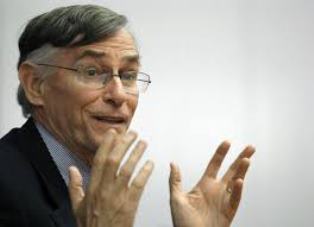
Brokerdealer regulator FINRA trying to be more transparent is no easy trick considering that its constituency is often conflicted when it comes to the topic of disclosure and visibilty, but industry veteran Tom Gira, EVP of Market Regulation is putting his best foot forward.
(Traders Magazine) –Nov 19–The Financial Industry Regulatory Authority is right on top of the evolving financial market structure and to that end, has announced new initiatives designed to increase market transparency.
The Financial Industry Regulatory Authority is right on top of the evolving financial market structure and to that end, has announced new initiatives designed to increase market transparency.
Thomas Gira, Executive Vice President, Market Regulation at FINRA, laid out the regulator’s future plans in remarks made Tuesday, November 15 at the Inaugural Traders Magazine Equity Market Structure Town hall forum at the Upper Story in New York City. In speaking to the audience, he assured that the group is on top of changes in the market and seeks to continue to provide clarity, guidance and transparency into the trading markets.
Gira provided a brief recap of what initiatives have already been put into place, creating a “multi-faceted safety net for the markets and are designed to promote investor confidence.” Among the changes, he told of how regulators adjusted the market-wide circuit breakers, which give market participants an opportunity to assess their positions, valuation models and operational capabilities when extreme periods of volatility occur. On top of that, the marketplace now has a limit up/limit down regime, which addresses the type of sudden individual stock-price movements that the market experienced during the May 2010 flash crash.
Also, he reminded that the Securities and Exchange Commission has also passed the Market Access Rule, which requires firms entering orders into the market, or allowing their customers to enter orders into the market, to have pre-trade controls to avoid erroneous and duplicative orders and to establish pre-trade capital and credit controls on orders entered into the market, among other things. And most recently, the SEC implemented Regulation SCI to strengthen the technology infrastructure of the U.S. securities markets.
Prospectus.com team of capital markets experts and securities lawyers specialize in preliminary offering prospectus, secondary offering prospectus and full menu of financial offering memorandum document preparation. More information via this link
“In sum, I think we are rightly focusing on the evolution of the market more than whether there is something seriously wrong with the market,” Gira said. “So in that vein, I would like to focus on how FINRA is working to stay ahead of issues through our focus on transparency and by making use of innovative technology in our surveillance programs.”
Among the new transparency initiatives, FINRA is continuing to look at ways to expand its Trade Reporting and Compliance Engine, or TRACE, which looks at the trading of corporate bonds and their trade data, including the price and size. The system is now looking at expanding TRACE to include transaction and quote data for the $13 trillion Treasury market.
“There is currently no centralized trade reporting system for Treasuries. Regulators, including FINRA, the SEC, the Treasury Department and the Federal Reserve Board, have taken steps to implement a transaction-reporting regime for Treasuries,” he said. “Starting next July, firms will have to report certain transactions in Treasury securities to TRACE.”
At this time, he added FINRA will not disseminate information on transactions in Treasuries. This new requirement will significantly enhance the ability of FINRA and other regulators to understand trading activity in Treasury securities.
To continue reading this story by John D’Antona, Jr from Traders Magazine, click here

